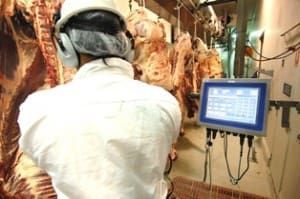WET weather money.
It used to be a tantalising bait cast out after rain events by large processors to motivate cattlemen and women to ‘go that extra yard’ in pulling cattle out of boggy paddocks, or across swollen creek crossings, in order to maintain plant throughput.
 But with widespread rain across eastern states last week, and an eight-day forecast predicting 50-100mm in some areas during early September, there’s little sign of it in the current market dynamic.
But with widespread rain across eastern states last week, and an eight-day forecast predicting 50-100mm in some areas during early September, there’s little sign of it in the current market dynamic.
Apart from talk of a few extra dollars being splashed about in Central Queensland, there’s been no sign of wet-weather money in the market yet. That’s perhaps understandable, given the underlying difficulty in putting kills together due to the dramatic national beef herd retraction, and everyday slaughter cattle prices that are still close to record levels.
Last week’s NLRS slaughter report clearly showed the effects of rain disruptions, although it was masked somewhat by some beef plants returning to normal shift cycles after a fortnight of closures/reduced shifts.
Some processors even reported ‘a bit of momentum’ in their slaughter bookings – a rare event in the 2016 year – but last week’s rain stopped some of those deliveries in their tracks.
The seven days ended Saturday saw the eastern states slaughter tally fall well short of 120,000 head, although there was some upside in southern Queensland as several plants started to return to work after earlier layoffs. Contrast this with the same week last year, (156,000 head), and it leaves a 36,000 head deficit, 23pc behind the state of play a year ago.
Queensland’s kill rise 17pc, to 64,592 head last week – largely influenced by return to work at Teys’ Beenleigh plant after a week’s break, and higher tallies at several other large plants. Some contacts felt there may have also been some ‘residual’ cattle about, after two particularly quiet kill weeks in Queensland.
Further south, NSW was up just 2pc last week on the week before, at 25,300 head, while Victoria was unchanged at 19,200 head. South Australia produced a tally of 6715 for the week, down 9pc on the week before and -34pc year-on-year, and Tasmania was down 1pc at 3736 head.
As mentioned in our intro, the Bureau of Meteorology’s eight-day forecast could provide further slaughter disruptions during early September, if it proves correct. Areas in southwest Queensland are tipped to receive up to 100m of rain in coming days, with big falls likely right across NSW.
On top of paddocks that have already received unusually high rainfall since July, even another 25-50mm will make cattle movement difficult in many areas.
Grids largely unchanged
Grids this week for southern Queensland direct consignment in coming weeks remain at 560-570c on the four-tooth grassfed ox, and 510-520c for best cows, depending on delivery point.
That’s back 20c/kg from the market peak, but that high-point lasted only a few days. Expect the flow in slaughter numbers anticipated during October/November (see this morning’s separate item) to be the next trigger-point for further downwards price adjustments.
There’s been a significant correction in forward priced 100-day grainfed ox in the past few days, with one large competitor in southeast Queensland dropping his market-leading rate back from 600c/kg to 580c. Forward-priced 100-day cattle now are pushing up against the Christmas/New Year closure period, so the market for grainfeds could get unstable in coming weeks, market watchers are telling Beef Central.
This year’s end of year seasonal closure dates are still to be decided by processors, and will be somewhat dependent on weather. January 18 is looming as a favoured recommencement date for some Queensland beef plants, after their customary summer holiday closure this year.
The international meat market remains very flat, trading desks reported this week, with US 90CL grinding meat prices back at least 45c/kg on their recent highs seen only a month ago.
See this morning’s related item: “Is there an early spring surge ahead for cattle turnoff?”



HAVE YOUR SAY